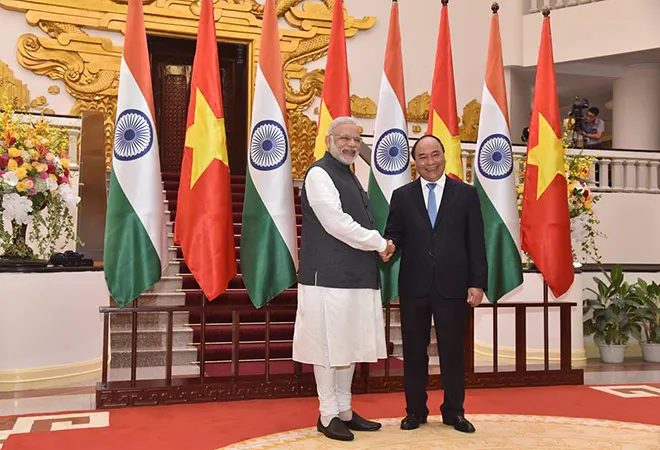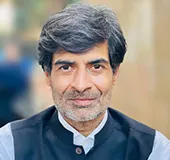What kind of great power will India be? Is “greatness” an index of raw power - economic, military and political — or is it variable of a country’s ability to punch above its weight? While tipping one’s hat to the already robust debate in New Delhi’s strategic community about India’s future as a “leading power”, it is also important to acknowledge the fluid environment in which such ambitions will be pursued.
What do we know for sure? There is a certain inevitability to India’s imminent arrival as a 10 trillion dollar economy. Moribund politics or risk-averse policies cannot prevent this from happening. In pure mathematical terms, our trajectory appears to be on the right path, to break out as one of the three biggest economies in the world, perhaps by 2035. What is uncertain is India’s ability to “act” like a multi-trillion dollar economy. In other words, there is no inevitability to India having the necessary administrative capability, strategic foresight or institutional arrangements that can effectively leverage its size. There is even less certainty that India will shape global affairs in consonance with its own ethics and experience.
This is due to a number of factors: nation-states today find themselves with limited resources to pursue “development”, given that wealth generation and deployment is definitively in the hands of the private sector. For instance, India spends nearly 5% of its GDP today — nearly $90 billion — on infrastructure building. Over their lifetimes, Facebook founder Mark Zuckerberg and his wife Priscilla will give away half that amount to philanthropic causes. What does the staggering and unprecedented accumulation of wealth by the private sector mean for the state? Governance will no longer be the domain solely of the state, as businesses contribute and influence the agenda of “nation-building”. The assumption that an economically powerful India will have a unified strategic vision to execute its great power plans will, therefore, be severely tested.
Secondly, civil society actors and academics are today at the forefront of global governance, their inclusion made possible by digital technologies. If businesses and civil society actors struggled to make their voice heard at the time the General Agreement on Tariffs and Trade was negotiated (GATT) in the nineties, they have been instrumental in killing the Trans-Pacific Partnership. Policymaking on internet governance today needs the seal of approval of civil society, who make sure digital spaces respect free expression, privacy and affordable access. The Indian state, whatever its grand strategy may be, will have no option but to co-opt civil society and policy thinkers in its attempt to project power in the region and beyond.
https://www.youtube.com/watch?v=9tj3TbI0Pfs&list=PLHu-cm5A_l82T0rUQkXbKsFSowUCCKbtQ&t=552s&index=2
How might a multi-faceted, multi-stakeholder discussion about India’s great power ambitions come about? Given the multiplicity of actors and interests, is it reasonable to expect India to act in a coherent, unified and most importantly, far-sighted manner so as to sustain its global clout? In other words, can a New Delhi Consensus emerge?
India has just over 15 years to discover some key aspects of its own national identity as it makes its journey to the 10 trillion GDP mark. The New Delhi Consensus can be achieved if India eschews some of its idiosyncratic postures and gives shape to a coherent Indian voice and proposition that will help guide the remaining decades of this century. The principles of the New Delhi Consensus must go beyond a common, minimum proposition and must be endorsed and advocated enthusiastically by India’s own businesses, its influential thinkers and commentators and civil society actors. While they may contest some micro propositions as all healthy democracies must, the specific positions of all stakeholders must in the same quadrant. All big powers have been able to shape such a ‘quadrant of consensus’.
Some of the defining characteristics of the “consensus” have already made themselves apparent. These features, as noted below, could form the baseline principles around which the Indian state, businesses and non-governmental organisations coalesce.
First, India is likely to pursue a developmental model that combines democracy and liberal values with high growth, setting a template for other emerging economies. As the only successful example of this variety — the “developmental states” of East Asia have all conceded to some form of authoritarian tendencies in the past century — the New Delhi Consensus must have this as the bedrock of its foreign policy. The Indian foreign secretary described it best at the recently concluded Raisina Dialogue: “Can India be different by being different?”
Second, if India is able to pursue both its economic development and liberal democratic traditions, it must offer a non-Western ethos to balance both. This is easier said than done. After all, it is commonly (but mistakenly) argued that modernity, pluralism, free societies and indeed democracy are all products of the Enlightenment era. Distinctly different from the binary Anglo-Saxon and Judaeo-Christian traditions that the United States and UK have followed, India must be less evangelical in its advocacy, and must respect and acknowledge the many forms of social contracts between the state, citizens and businesses.
Third, India must channel its leadership towards equitable global governance. Its foreign policy must be rooted in respect and shared governance of common spaces and the public goods they provide. India is the sole emerging power that does not see common spaces in acquisitive or captive terms, and its presence will temper the unbridled western urge to profit from the management of public goods. Indian contribution to the global climate change agenda in the Paris talks of 2015 as well as its developmental assistance to African countries seeking access to affordable antiretrovirals in the battle against HIV/AIDS offer examples of actions that are morally correct and economically sustainable.
Fourth, India’s global partnership and assistance programme should be recipient-led for it to be an influential shaper of the global growth and development agenda. The largest “quota” of new development finance will flow from India (among other economies) in the next two decades. What’s more, India's journey to the $ 10 trillion mark will be replete with experiences to share, some to emulate and others to improve. Having made no attempts to pursue exceptionalism — unlike the United States and China — India’s development story will be embraced with vigour by foreign markets and governments.
And finally, India must combine its pragmatic pursuit of economic or strategic interests with idealism. For instance, New Delhi should pursue an absolute commitment to universal nuclear disarmament as a realisable goal, along with desire to be on the NSG high table as a responsible and rule-setting nuclear power. Moral leadership, dismissed all too easily in the dust and dirt of international politics, is increasingly important to global governance. The pursuit of ideals is itself a strategic imperative, as the United States and Europe have most recently demonstrated through their successful campaign for “green growth”, ensuring both a global emissions reduction pathway and the promotion of Western technologies for sustainable development.
Observers of India’s foreign policy would acknowledge that Prime Minister Modi and his team have already taken a few steps to further develop these tenets. Renewed attention towards India’s development partnership programme, its leadership role on matters of global governance (such as climate and internet regimes) and the government’s “Neighbourhood First” policy emphasise the desire to cultivate a New Delhi Consensus. This desire is also motivated by a realist assessment of current times. In a rare speech on foreign policy delivered at the Raisina Dialogue 2017, Prime Minister Modi acknowledged that “gains of globalisation” were at risk and there were new “barriers to effective multilateralism.” Implicit in his remarks was his appreciation that the world needed new leaders, such as India, who would guide many global projects over the course of this century.
India’s approach to global governance would stand out from the Washington Consensus or the Beijing Consensus in that it would acknowledge the important roles of the private sector and civil society. While both the United States and China see the capturing of global markets as a way to perpetuate their influence, their world views stem from the absolute primacy of the state. The Washington Consensus, despite its professed commitment to open markets, saw the nation-state as the mediator of the terms of development.
The New Delhi consensus, in contrast, must absorb views from outside the government, co-opting businesses, rights groups, universities and research institutions as essential players in its global agenda. The history of india is a saga of the progress of society, and of social and community institutions, with or without a strong state and sometimes in spite of the state. We cannot forget that essence while crafting the New Delhi Consensus.
This commentary originally appeared in narendramodi.in.
The views expressed above belong to the author(s). ORF research and analyses now available on Telegram! Click here to access our curated content — blogs, longforms and interviews.




 PREV
PREV


